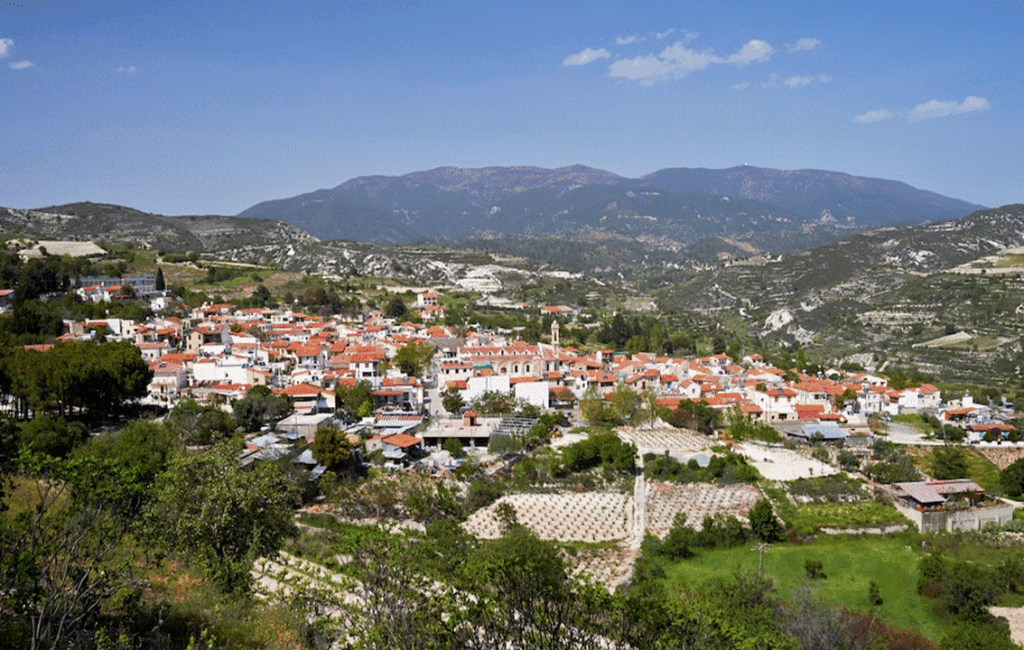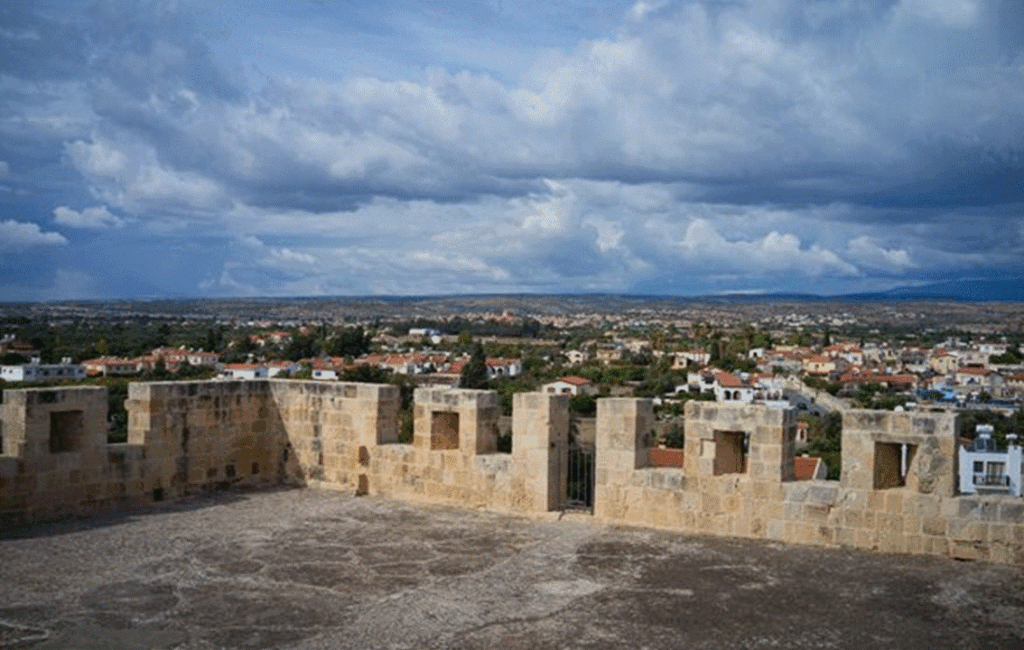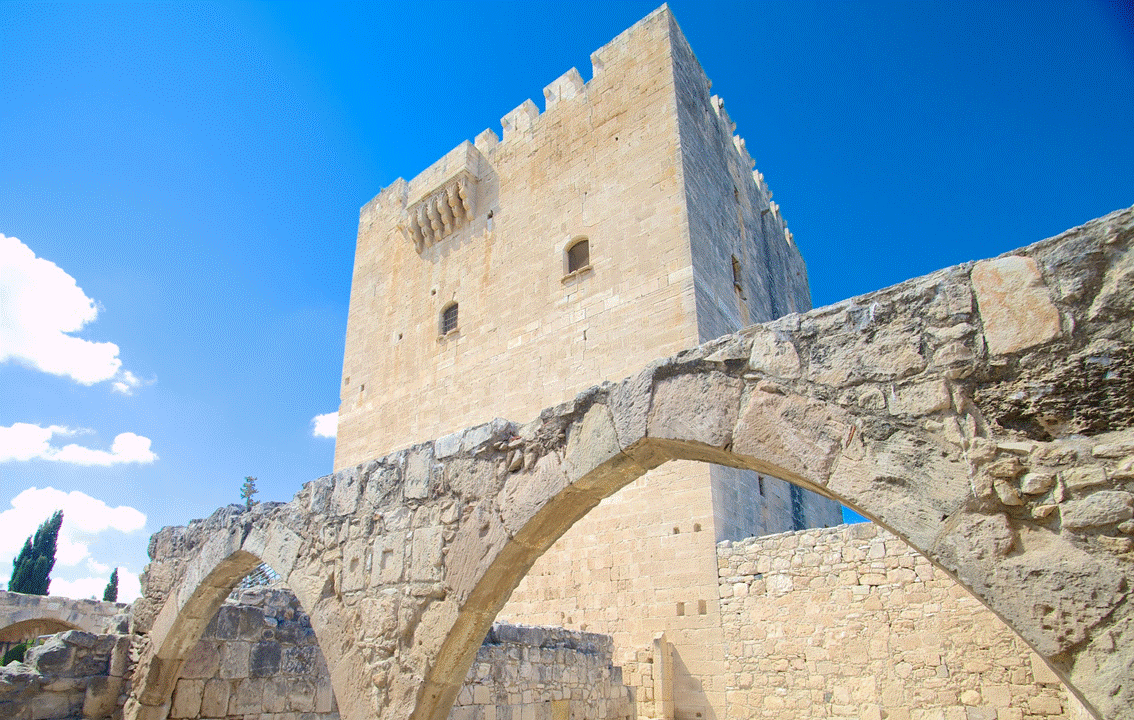THE CASTLE IN THE VILLAGE OF KOLOSSI
A LIMASSOL LANMARK
Kolossi Castle is a landmark that has survived the test of time. This historic building serves as a vivid reminder of the strategic importance of Cyprus and its influence in the immediate area surrounding the island. The castle also stands as a good example of the diverse influences that have shaped the island’s history over the ages. Primarily used for military purposes, the castle since its inception in the 13th century, has also been used as a sugar refinery and a prison. The structure has also helped to shape the local landscape and stands as a symbol of Cyprus’s enduring resilience and legacy of its medieval past. The castle today continues to captivate visitors who want to immerse themselves in the multi-faceted history of the island.
A MEDIEVIL FORT
The village of Kolossi, in the Limassol region, boasts one of the most poignant landmarks on the island. The Kolossi Medieval Castle has become one of the most important preserved fortresses from the Frankish period on the island. Today, it stands as a fine example of the military architecture of the time. The site where the imposing castle stands began life as a simple fort during Byzantine times. The early part of the 13th century, however, saw a dramatic change in the area’s demographic. The arrival of the Knights Hospitaller marked a stark change in the fortunes of the fort. They immediately recognised its importance and quickly identified the economic potential of the area surrounding it. This prompted them to add the strategically positioned castle to the fort to protect their economic interests.
THE ARRIVAL OF THE FRANKS
The Franks, after the third crusade lost Jerusalem to the forces of Islam. Cyprus, because of this, became their new base of operations. The Knight Hospitallers, who arrived as a contingent of the new ruling Frankish class were granted full autonomy in key regions of the island. This included the village of Kolossi. The Knight Hospitallers, as their name suggests, were a military order that held caring for the sick and the poor at the centre of their religious order. As a result, they often sought to generate their own funds for their philanthropic causes.
PERFECT CONDITIONS FOR SUGAR CULTIVATION
The Knights Hospitaller noticed almost immediately that the area, where the castle stands today, was very fertile. It also had an abundant supply of fresh water from the river Kouris. This, along with the local climate, created almost perfect conditions for sugar cultivation. Sugar, at the time was a highly prized commodity throughout Europe. With this in mind, the knights would go on to create a fledgling sugar industry.
A CASTLE BUILT TO PROTECT SUGAR
As the Knight Hospitaller’s sugar operation took hold, it was identified that they needed more security. They went on to establish an extensive sugar plantation around the fort and they went on to add a castle almost immediately thereafter. The castle’s direct connection to the sugar industry, that flourished in Cyprus during the Middle Ages, remains one of the most fascinating aspects of the island’s history.
A STRONGHOLD OF COMMERCE
After the castle’s completion, all sugar production was moved to within the castle’s walls. This transformed the structure into a thriving commercial centre. The castle’s imposing structure, not only served as a key defensive stronghold but also allowed the Knight Hospitallers to successfully gain a vantage point for monitoring and protecting its interests in the whole region. Once sugar production was firmly established, the knights went on to exploit the rest of the agricultural industries surrounding the village of Kolossi. The knights further developed the cultivation of olive trees, cereal, carob trees, and of course viticulture that bore the famous Commandaria wines. All of this further allowed the immediate area to become one of the richest on the island.
AN INTRIGUING PAST
Over the ages, the strategic significance of the castle, as well as its location and economic power, made it a target for various rival powers. The castle was used as a base for several elite military units. The castle’s intriguing history includes several battles for control that involvesd numerous sieges. These have all left their indelible mark on its sturdy walls and commanding tower. The most well known military unit to use the castle is the infamous ‘Commandaria Battalion’ of Hospitallers.
THE COMMANDARIA BATTALION
This group of knights went on to control most of the agricultural produce in the wider region. This included all of the surrounding villages and their agricultural produce. They adopted their informal name from their most prized export, ‘Commandaria Wine’. This wine was once proclaimed as ‘Wine of Kings and King of Wines’ by no other than Richard the Lionheart at his wedding in Limassol years earlier.
A COAT OF ARMS
The presence of Louis de Magnac’s coat-of-arms, on the wall of the castle, is a tribute to the knight. During the 15th century, it is believed that the castle was expanded and largely re-built BY the Hospitaller Commander of Kolossi at that time.
A NOBLE RESIDENCE
As the centuries passed, Kolossi Castle continued to play a significant role in the island’s history. The castle served as a residence for various noble families, as well as several military commanders of their day. The Republic of Venice, which took control of the island in the late 15th century, improved the castle’s fortifications. They also upgraded the sugar refinery, increasing production.
DESTROYED BY ARTILLERY
Ottoman artillery destroyed most of the Castle after a gallant defence by Venetian defenders. The Ottomans has launched a large scale invasion of the island in the late 16th century and needed to irradicate the castle’s threat. The Venetians refused to surrender and the decison was taken to destroy it. All that remains today of this once great castle is its three-story keep and its bailey. The castle would go on to serve as a prison under the British administration of the 19th century.
THE CASTLE TODAY
Today, the castle stands as a landmark and place of historical interest. It is a testament to the island’s tumultuous history, drawing visitors from around the world. Visitors often visit the landmark to witness its medieval architecture and explore its varied history first-hand. The castle offers a glimpse into the past, allowing visitors to step back in time and imagine the lives of those who once lived there. Visitors can explore all three storeys of the keep and then make their way to the roof, where they can enjoy panoramic views of the area. Visitors can also enjoy the wonderful gardens that are often used as a backdrop for wedding photos.
Kolossi Medieval Castle
September 16th – April 15th
8.30 am to 5.00 pm
April 16th – September 15th
8.30 am to 7.30 pm
Tel: 25 934 907
Bus 17 from Limassol










